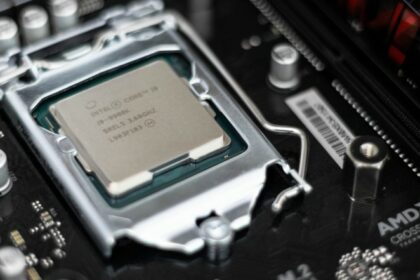If you have been wondering where to plug in case fans, you have two options. The first is to plug your case fans into your power supply. The second is to plug them into your motherboard.
Installing your case fans to your motherboard brings with it a few advantages. The biggest is that you can monitor your fans and change their speed. This can be quite advantageous, as you can lower the speed (and the noise) when you are not pushing your system to its limits.
While installing the case fans to the PSU is quite simple, the motherboard can get a bit complicated. As such, this guide will show you how to install case fans to motherboard.
Installing the Case Fans to the Motherboard
If you are building your own gaming PC, there will come a point when you need to install the case fans. This is because they are absolutely necessary to keep your PC cool while gaming.
If you are building a PC to game on, then installing the fans onto the motherboard is a no-brainer as it will allow you to control the speed of the fans. This way, you have the option of installing a lot of case fans and running them at lower speeds to generate less noise. We have a guide that can help you determine how many case fans you need.
Here is a step-by-step guide on how to install case fans on your motherboard.
Make Sure the Case Fans Are Facing the Right Way
Before you connect the fans to the motherboard, you should make sure that all of the fans are facing the correct direction. Usually, the air is directed from the front of the case to the back, with the front fans being intake and the rear fans being the exhausts.
Many fans will have an arrow on the frame that tells you which way the fan will blow the air. As such, you want the arrow pointed into the case for the intake fans and outside the case for the exhausts.
If the fan does not have an arrow, it is almost certain that the air will blow towards the direction of the sticker with the brand name and additional information. In this case, you will want the sticker on the inside of your case for your intake fans and on the outside for the exhausts.
Connecting the Case Fans to the Motherboard

There are specific fan headers where you can attach the fans to your motherboard. You will be able to locate these headers through the labels, which will read SYS_FAN (System Fan) and CHA_FAN (Chassis Fan). You may want to refer to the manual of your motherboard if you are unable to locate the fans.
Generally, it is a good idea to plug in the fan to the nearest available header. A fan header will usually have four areas where the pins of your fans will go. Remember that the fourth pin is for the additional data required for monitoring and controlling the speed of the fans.
If you have a fan with only three pins, you can still attach it to a header with four pins. However, you need to make sure that you plug the fan into the correct pins. Consult your motherboard’s manual to determine which pins to use.
What About Additional Fan Headers?
Your motherboard will also have additional headers. If you have a high-end motherboard, it will have multiple headers for case fans that you can utilize. A standard motherboard, however, will only have two headers for the case fans.
Apart from the two headers, you will see headers for CPU_FAN and PWR_FAN (Power Fan). The PWR_FAN is meant for the power supply fans but can be used for case fans as well. The CPU_FAN, however, must be reserved for the CPU cooler.
Your motherboard may also have a header for AIO_PUMP. This is meant to be used for water cooling systems only, and you should never plug your case fans into this header.
How to Install Additional Case Fans to Motherboard
If you wish to have more case fans than your motherboard allows, you can always plug in the additional fans to the power supply. All you need is a Molex adapter that can plug in your fans to the four-pin Molex connectors on your PSU.
You can also get a Y-splitter, which will allow you to connect two fans to a single header. However, it is almost never a good idea to use a splitter that allows you to connect three fans to a single header. This is because you may cross the fan header’s amperage limit and cause damage to your motherboard.
Conclusion
By now, you should have a clear understanding of how to install case fans to your motherboard.
Installing the case fans to your motherboard should be your first preference, as it allows you to have control over the fan speeds. That said, there are no additional disadvantages to not using the motherboard for case fans. As such, you can also install the fans to your PSU if you have no problem with the fans running at full speed.






